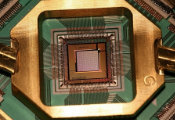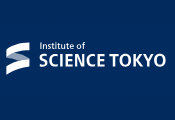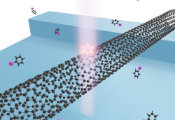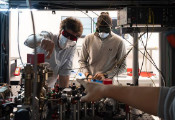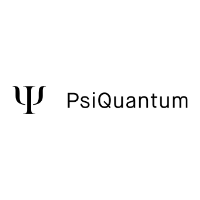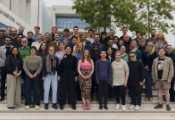SoftBank Corp. and Partners Develop Large-Scale Energy Gap Calculation Method Using Quantum Computers With View to Industrial and Social Implementation
July 31, 2025 -- SoftBank Corp. (“SoftBank”), Mitsubishi Chemical Corporation (“Mitsubishi Chemical”), Keio University, and JSR Corporation (“JSR”) are pleased to announce they jointly developed a “large-scale energy gap calculation method using a quantum computer” at the IBM Q Network Hub at the Keio University Quantum Computing Center, and that a research paper on this the achievement method was published in the Proceedings of the National Academy of Sciences of the United States of America (PNAS). (Link to the published paper: Tensor-based quantum phase difference estimation for large-scale demonstration | PNAS(Open in a new window)) .
SoftBank is actively engaged in the development of applied quantum computing technologies as part of its research and development efforts aimed at building next-generation social infrastructure. The development and design of new materials—such as battery components—require highly precise simulations to predict the behavior of molecules and atoms. Among these, the energy gap in quantum chemistry calculations is a key indicator for assessing the likelihood of chemical reactions. This area is closely linked to solving societal issues such as reducing environmental impact through more effective material development. Traditionally, such calculations have required enormous computation time on classical computers. By leveraging quantum computers, it may become possible to perform energy gap calculations—which were previously extremely difficult—with both high efficiency and accuracy. As a result, this technology is drawing much attention as a promising means for analyzing large and complex molecules.
In this study, SoftBank and its partners proposed a method that combines quantum phase difference estimation, which is one of the energy gap calculation methods, with quantum circuit compression using tensor networks, to accurately determine the energy gap of large molecules. This method was implemented on IBM's gate-based commercial quantum computers—IBM Quantum System One and IBM Quantum System Two applied to the Hubbard model and linear molecules.
Furthermore, by incorporating Q-CTRL's quantum error suppression module, SoftBank and its partners achieved additional compression of quantum circuits. As a result, energy gap calculations for systems with up to 32 qubits (32 spin orbitals)—over five times larger than what had been done with conventional methods, were successfully performed. Previously, due to limitations in executing large-scale quantum circuits, QPE could only be applied to systems with up to 6 qubits (6 spin orbitals).
These results demonstrate significant progress and are expected to pave the way for high-precision analysis of physical properties in large molecular systems.
SoftBank aims to leverage the results of this achievement to help address societal challenges in fields such as materials development and environmental technology with quantum computing. Moving forward, SoftBank will continue to promote the social implementation of quantum computing technologies with a view to industrial applications, advancing joint research in collaboration with academic institutions and partner companies.

